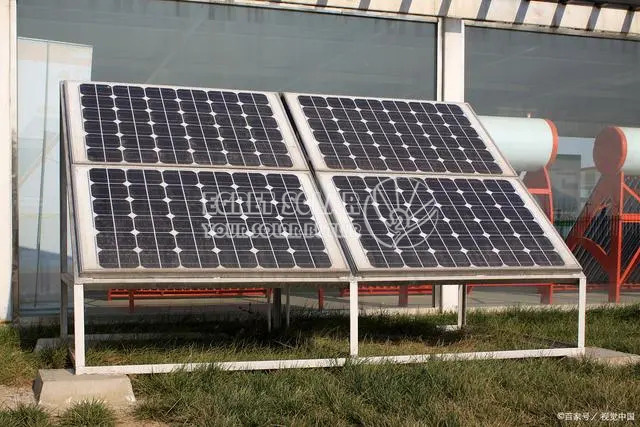- English
- Español
- Português
- русский
- Français
- 日本語
- Deutsch
- tiếng Việt
- Italiano
- Nederlands
- ภาษาไทย
- Polski
- 한국어
- Svenska
- magyar
- Malay
- বাংলা ভাষার
- Dansk
- Suomi
- हिन्दी
- Pilipino
- Türkçe
- Gaeilge
- العربية
- Indonesia
- Norsk
- تمل
- český
- ελληνικά
- український
- Javanese
- فارسی
- தமிழ்
- తెలుగు
- नेपाली
- Burmese
- български
- ລາວ
- Latine
- Қазақша
- Euskal
- Azərbaycan
- Slovenský jazyk
- Македонски
- Lietuvos
- Eesti Keel
- Română
- Slovenski
- मराठी
- Srpski језик
Distributed Photovoltaic (PV) Generation vs. Centralized Photovoltaic Generation: A Comparative Analysis
With the global transition in energy structures and the widespread adoption of renewable energy, photovoltaic (PV) generation has emerged as a significant source of clean energy. However, PV generation exists in two main forms: distributed and centralized. These two forms differ significantly in various aspects, and this article will delve into their distinctions.

I. Definition and Scale
Distributed PV generation typically refers to small-scale PV systems installed at the user end, with generation capacities ranging from a few kilowatts to several hundred kilowatts. These systems are directly connected to the distribution grid and provide power to users. In contrast, centralized PV generation involves large PV arrays installed in utility-scale power plants, with generation capacities typically ranging from several megawatts to hundreds of megawatts. These plants usually transmit power to distant users via high-voltage transmission lines.
II. System Structure and Operation Mode
In terms of system structure, distributed PV generation systems are typically connected directly to the distribution grid, forming a grid-connected system. In such systems, the distribution grid not only transmits electrical energy but also provides necessary support to ensure the stable operation of PV systems. Centralized PV power plants, on the other hand, are connected to the main grid via high-voltage transmission lines, and their operation is subject to the dispatch and control of the main grid.
III. Environmental Impact and Land Use
Regarding environmental impact, distributed PV generation typically has a smaller environmental footprint. Due to their smaller scale, they require lower demands on land and water resources, with no need for extensive land development during installation. However, centralized PV power plants, due to their larger scale, often necessitate extensive land development, potentially leading to land resource occupation and changes in the ecological environment. Additionally, the construction of centralized plants may involve the use of water resources and alterations to natural landscapes.

IV. Energy Utilization and Efficiency
In terms of energy utilization and efficiency, distributed PV generation, being closer to users, can better adapt to changes in electricity demand. Moreover, due to their smaller scale, maintenance and operation are relatively simple, resulting in higher energy conversion efficiency. In contrast, centralized PV power plants, due to their larger scale, require significant electricity transmission and conversion, which may lead to energy losses and decreased efficiency. Furthermore, the construction and maintenance costs of centralized plants are typically higher, requiring substantial investment to achieve economic viability.
V. Scalability and Flexibility
Distributed PV generation demonstrates significant advantages in scalability and flexibility. With technological advancements and cost reductions, the scale and performance of distributed PV systems can be easily expanded and upgraded. Moreover, being located at the user end allows for flexible meeting of specific user energy needs and preferences. In comparison, the construction of centralized PV power plants requires substantial investment and long-term planning, resulting in relatively lower scalability and flexibility.
VI. Economic Viability and Return on Investment
In terms of economic viability, distributed PV generation typically offers a higher return on investment. With lower construction and operating costs due to their smaller scale, distributed systems can rapidly recoup investments. Furthermore, distributed PV systems can provide users with electricity supply security and energy-saving benefits, enhancing their economic benefits. Conversely, the construction costs of centralized PV power plants are higher, requiring large capital investment and extended operation to achieve economic benefits.
VII. Policy Support and Regulatory Environment
In the realm of policy support and regulatory environment, distributed PV generation is increasingly receiving attention and support. Many governments have enacted relevant policies encouraging the development of distributed PV and offering incentives such as tax breaks, subsidies, and loan support. Additionally, some countries have formulated distributed energy laws and grid access regulations to promote the development of distributed PV. In contrast, the construction of centralized PV power plants often faces more policy and regulatory restrictions, such as regulations on land use, environmental assessments, and power transmission.
In summary, distributed and centralized PV generation exhibit significant differences in various aspects. Distributed PV generation offers advantages such as small scale, minimal environmental impact, high energy utilization efficiency, strong scalability, economic viability, and substantial policy support. Conversely, centralized PV power plants feature large scale, higher land resource occupation, environmental impact, and regulatory constraints.




